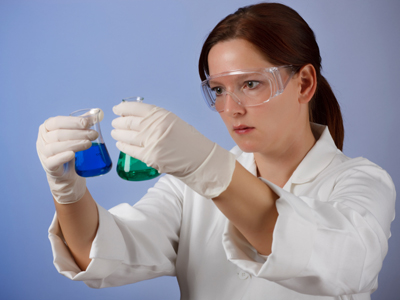
Rates of Reaction 3
This Chemistry quiz is called 'Rates of Reaction 3' and it has been written by teachers to help you if you are studying the subject at high school. Playing educational quizzes is a user-friendly way to learn if you are in the 9th or 10th grade - aged 14 to 16.
It costs only $12.50 per month to play this quiz and over 3,500 others that help you with your school work. You can subscribe on the page at Join Us
Many factors affect rates of chemical reactions - pressure of gasses, temperature, surface area of solids, concentration and if there is a catalyst. Anything that will change the probability of particles colliding or change the energy of the collisions will affect the rate of a reaction. This is the last of three high school Chemistry quizzes looking at these factors.
When investigating rates of reaction, it is necessary to make a series of measurements over a period of time, for example, how much hydrogen is produced during the reaction of an acid with zinc. The experiment should be repeated several times and, after discarding any anomalous results, the readings averaged and plotted on a scatter graph with time along the horizontal axis. The line of best fit will usually be a curve, with the steepest gradient at the start indicating the fastest rate of reaction. Where the curve is horizontal, is shows that the reaction had finished. The conditions of the experiment can then be changed and the whole process repeated. Plotting the results on the same graph, using different colors, gives a quick and easy visual interpretation, from which you can write your conclusion.
When working out rates of reaction mathematically, as higher tier candidates are more likely to do, dividing the amount of reactant used (or product formed) by the time taken gives a valid rate. This is effectively the same as working out the gradient of a graph. If 15 cm3 of carbon dioxide were released in the first 20 seconds of a reaction, the rate would be 0.75 cm3/s. Later in the reaction, it may take 45 seconds to produce 10 cm3 of carbon dioxide, in which case the rate would have dropped to 0.22 cm3/s. This slowing down of the rate occurs because the concentration of one or both of the reactants changes during the reaction. Professional scientists usually refer to the initial rate of reaction, in other words the rate at the very start.
How would a decrease in temperature affect the rate of a reaction? What about surface area? Have a go at this quiz and test your knowledge of the factors which affect rates of reaction, such as temperature, surface area or pressure.
Ready for more?
not all...
quizzers. Try to win a coveted spot on our Hall of Fame Page.







